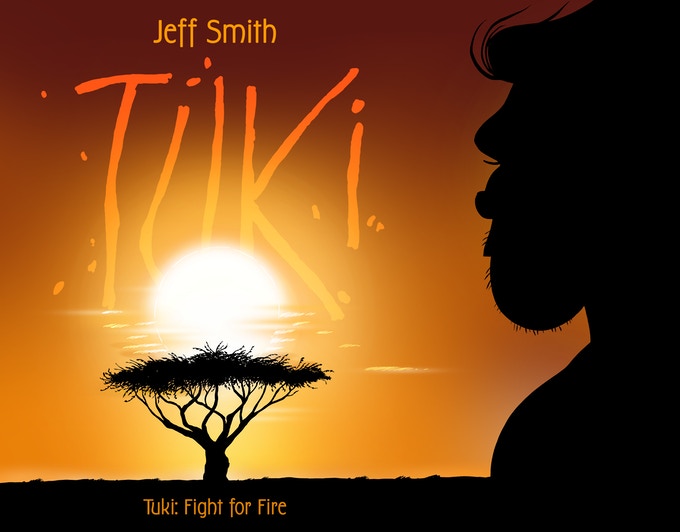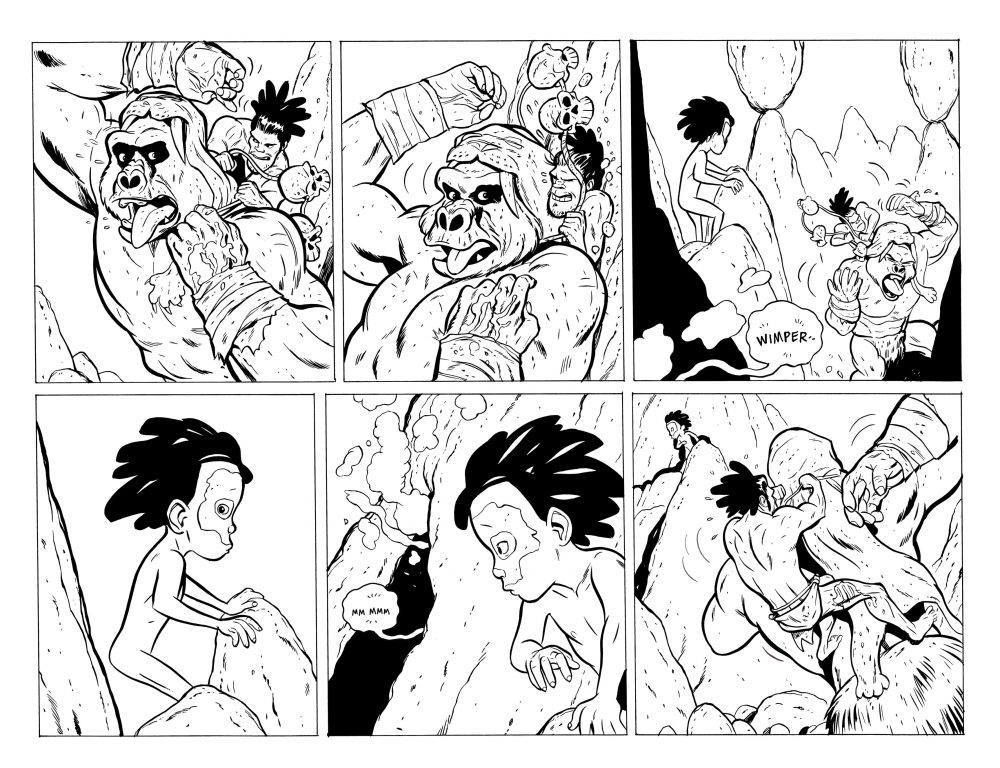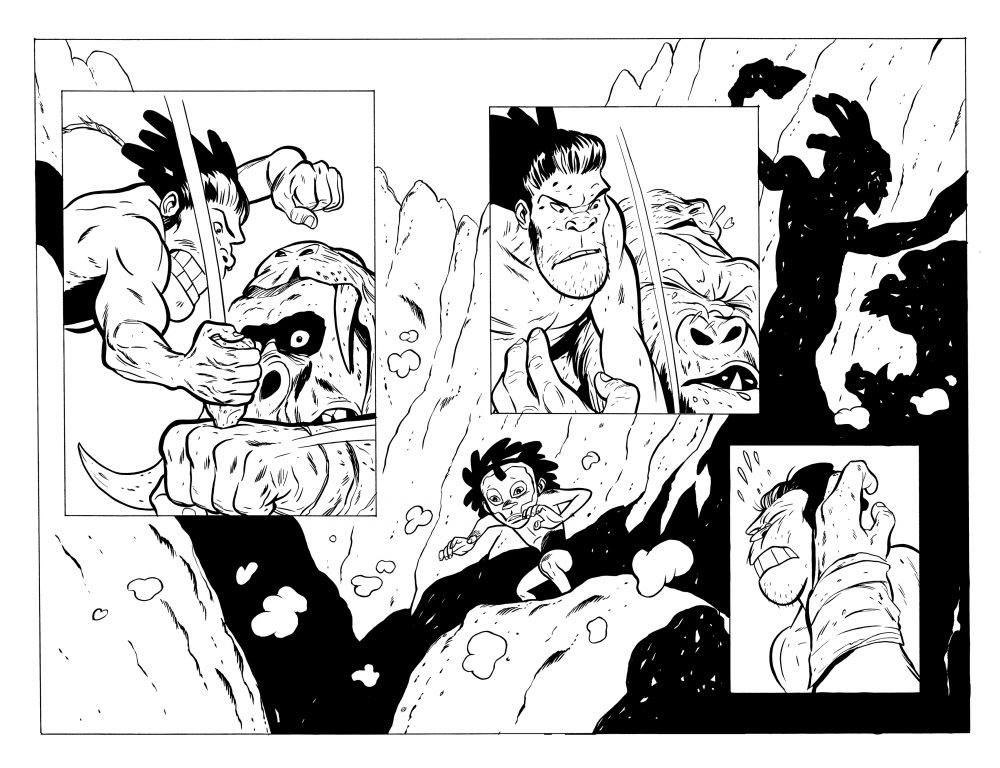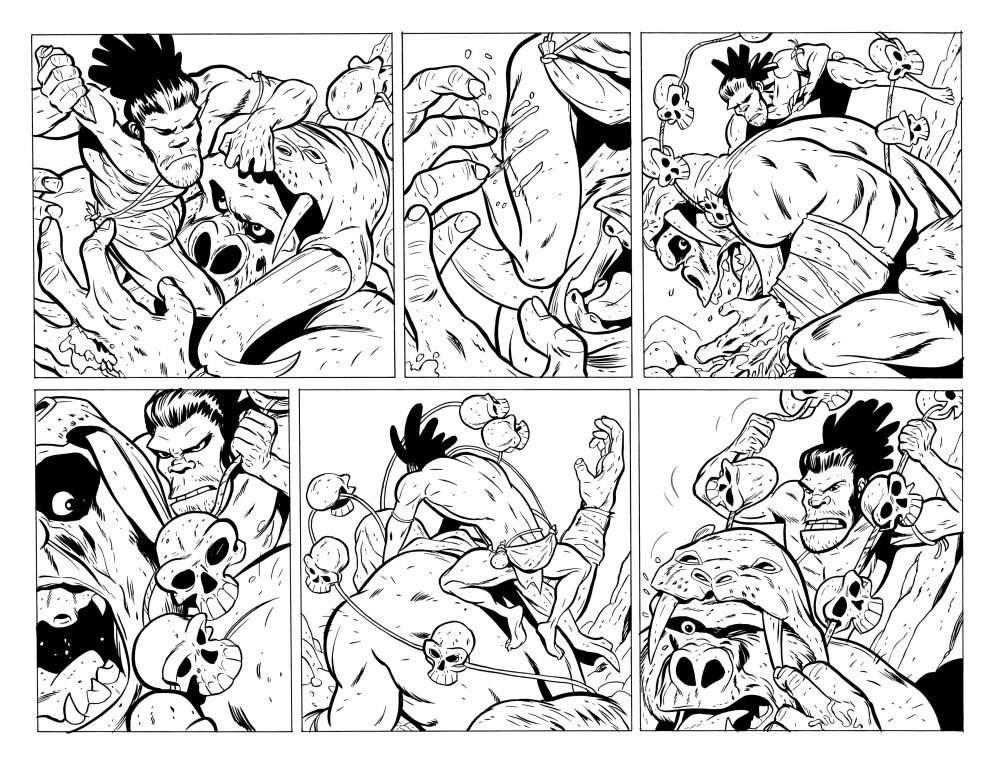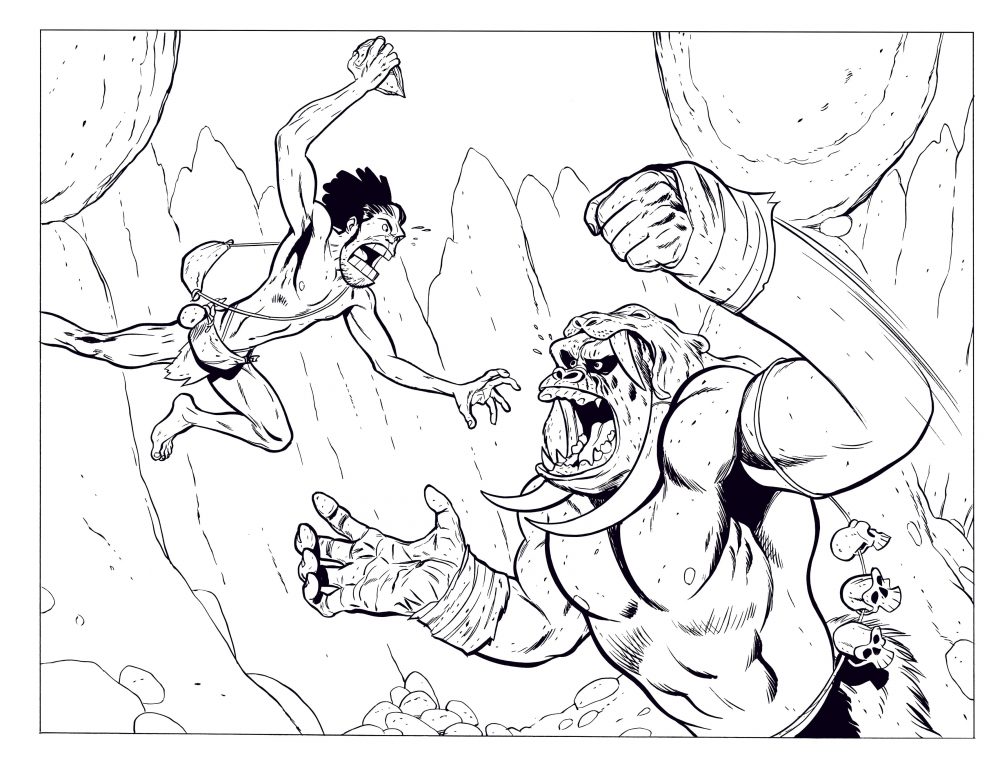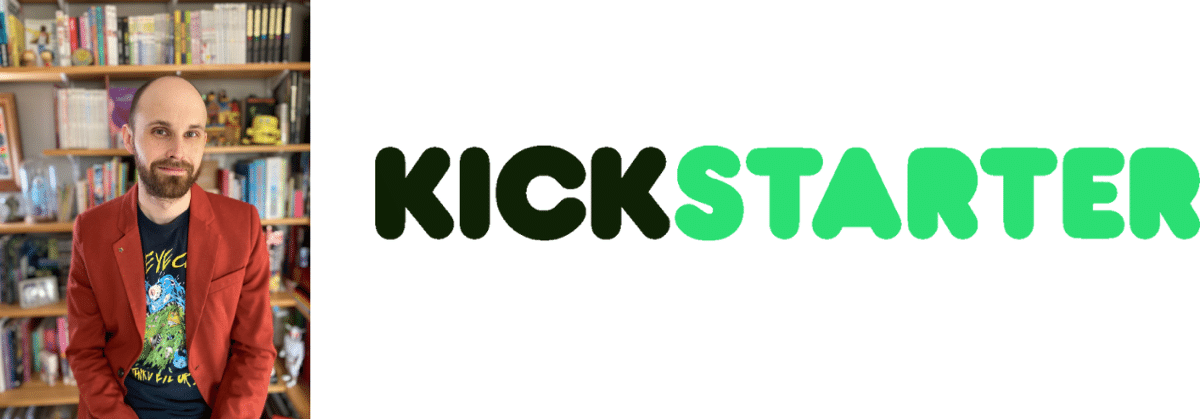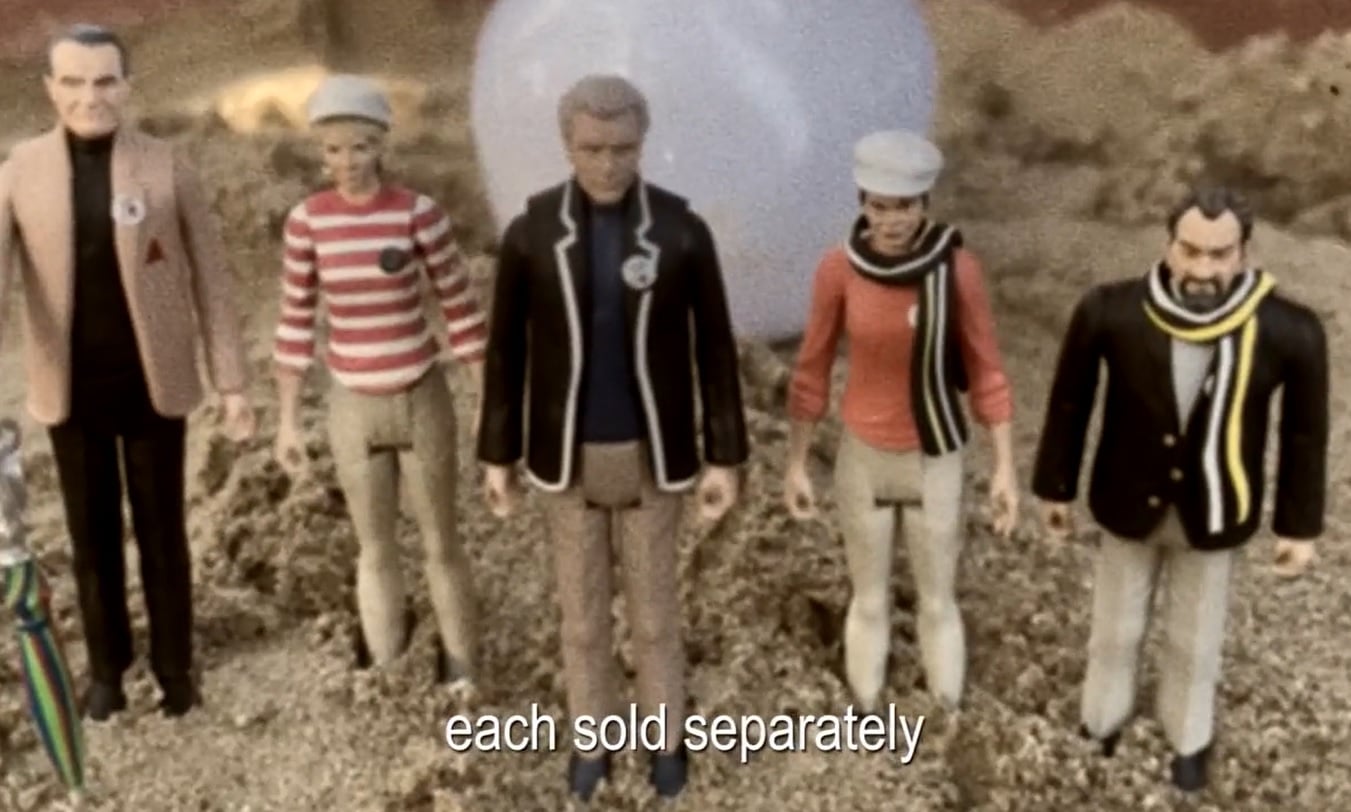Jeff Smith is the paradigmatic cartoonist of the modern age. His work has set the standard for what a comic can do and what a graphic novel can be. Smith’s groundbreaking Bone, a series that needs no introduction, introduced new generations to the adventures and grand scale of storytelling that the comics medium engenders. In the time since Bone’s epic run completed in 2004, Smith has kept busy with a variety of projects, including RASL, Shazam: The Monster Society of Evil, as well as co-founding Cartoon Crossroads Columbus (CXC). In 2013, Smith announced TUKI, a comic set two million years in the past. Though several issues were released, the project remained on a hiatus in the ensuing years due to extenuating circumstances. Now Smith is ready to bring TUKI to readers once more, this time reimagined as a newly-launched Kickstarter campaign for two heavy volumes of the tale.
The Beat sat down with Smith to get more in-depth about the background of TUKI, how the COVID-19 pandemic influenced the writing of the books, and why he ultimately decided to go with a Kickstarter to get this epic story out to readers.
AJ Frost: Hi Jeff! It’s an honor to take some time to chat with you today. TUKI has been long in the making. Can you tell me how this story came to you and what interested you in exploring these characters? What made their adventure worth telling?
Jeff Smith: I’ve always been interested in evolution. I am also a lover of lost realms and the fantastic heroes of pulp fiction. This is a fantasy story my Frazetta-loving eleven-year-old self is having a ball drawing!
The initial seeds for TUKI were planted when I visited Olduvai Gorge in the ’90s. That’s the famous archeological site in Tanzania where many early humans lived over time. Standing down among the rocks and dirt, looking up at the swaying trees above the gorge, I had a vision of multiple species of humans walking about interacting with each other. It was almost like seeing an echo of something that really happened. And, of course, two million years ago, it could have!
Frost: TUKI was announced in the stone ages of 2013. Along the way, several issues were released, but now readers are getting the full two-volume story. If you can say, what has happened during that ensuing time? What moved you along to finish the books?
Smith: The webcomic version of TUKI, later reprinted in four comic book issues, was set aside for various reasons. For one I was busy co-founding the comics festival CXC with Vijaya [Iyer, Jeff’s wife], Lucy Shelton Caswell, and Tom Spurgeon. But mostly, I felt TUKI needed to be reworked to flow better. I was trying at the time to replicate the feeling of classic Sunday pages like Flash Gordon or Prince Valiant, and while it seemed to work on the web, when collected, the one-page-a-week format had a start and stop feeling that didn’t allow the story to come to life in a way that satisfied me. Also, when the children showed up in the strip, I realized this is a story about family, and I needed to start over from the beginning. Which I did! This is essentially a new piece of work.
Frost: TUKI takes place at the dawn of mankind, which is an interesting canvas to work with. What intrigued you about placing a story at the earliest possible time in human history?
Smith: As I mentioned, two million years ago multiple human species existed at the same time. How cool is that for starters? Australopithecines, the species of the famous Lucy, is half hominid, half human from the waist down. Homo Habilis, still shaggy but with a bigger brain, invents the hand axe, a precision tool. And more! Turns out evolution is a little messier than it appears on bumper stickers showing a line of figures slowly standing upright. But what is really interesting about that particular moment is the first appearance of the great traveler Homo erectus, who not only has the biggest brain of all, but shows up with an amazing new power — the ability to control fire! This inflection point, this crossroads, with so many players and high stakes is too good to pass up.
Frost: What influence did the COVID-19 pandemic have on the book?
Smith: Without putting too much shine on it, it gave me more time at my drawing board. In 2019, I was playing around with the idea of making TUKI a graphic novel, then in 2020, I completed two of them. TUKI: Fight for Fire and TUKI: Fight for Family. Both books are part of our Kickstarter campaign, and if successful, Fight for Fire will ship in July, thirty years to the month that Bone #1 was released, and Fight for Family will follow in October.
Frost: As you mentioned, we’re thirty years out from the first issue of Bone, which certainly needs no introduction. How has the business of comics changed in the ensuing thirty years? Have there been developments that you see as positive for the industry? Any worrying trends?
Smith: Well, that’s not a gigantic question, is it? The biggest change is the wider acceptance of comics. The diversity of readers and creators, in terms of age, gender, race and content, has enriched our art form. Graphic novels have led to more comics in more hands. Probably the most amazing change, and the best one for me, is the sheer level of talent in the current generation. In mainstream and independent comics alike, the art and stories are amazing! The coloring! The ideas! If you can’t find a comic to suit your taste or blow your mind, you aren’t looking! In many ways, we are experiencing a new golden age.
Frost: Continuing on my previous question, what do you think has been the most significant or disruptive paradigm with regard to self-publishing? What is possible now that couldn’t have been possible thirty years ago?
Smith: I’m thinking about the fact that the distribution system that existed thirty years ago collapsed in the ’90s and never regenerated itself. When I started there were some eleven distributors, eleven monthly catalogs, so if one company wouldn’t carry your books, others would. On the plus side, with the advent of digital comics and vehicles like Kickstarter, the self-publisher has a chance to find their audience without having to go through any gatekeepers. I want to stress that folks who want to avoid gatekeepers still want to be on the shelves of comic book stores. This new era is still working itself out, but when things get back to normal and we can go to comic books shows where creators, readers, and retailers can be together, connections will happen. All the retailers I know love comics and love discovering books for their customers. In that sense, I am optimistic.
Frost: For you, what are the most exciting prospects of a Kickstarter campaign?
Smith: As we are conducting this interview, we are a few days out from the launch of our campaign, so the most exciting thing is the energy of anticipation. What’s going to happen? I don’t know!
Frost: What do you want potential supporters of the TUKI Kickstarter campaign to know, not only about your project, but about the special relationship between creator, patron, and the direct support that crowdfunding engenders?
Smith: I guess I’d want to folks to know that TUKI is a passion project for me. This is my third creator-owned and self-published work after Bone and RASL. TUKI is a book I’ve wanted to do for a long time. And it’s done! The first two TUKI books are finished! We just need to get them to the printers and into the readers hands! Hopefully this will be the beginning of a new epic series! I also want retailers to know there will be a tier just for them if they are interested.
Frost: Thank you so much for taking the time to chat with me!


